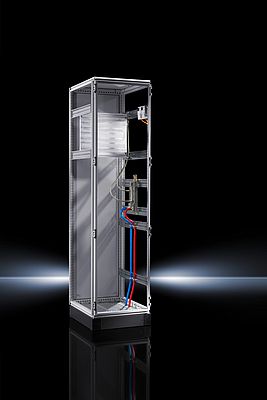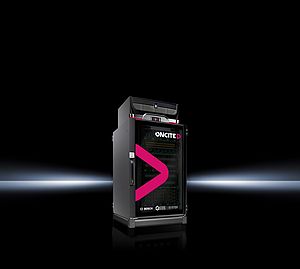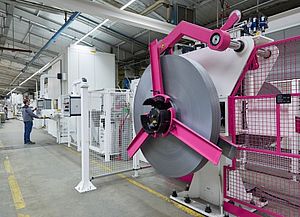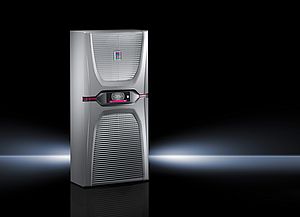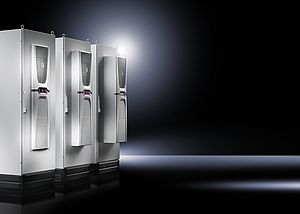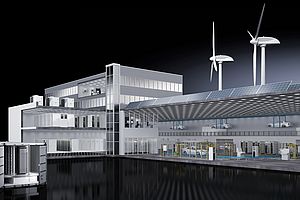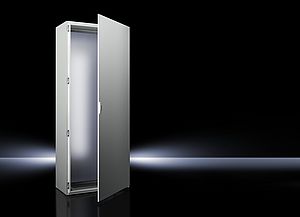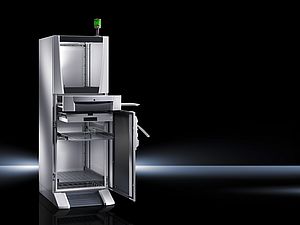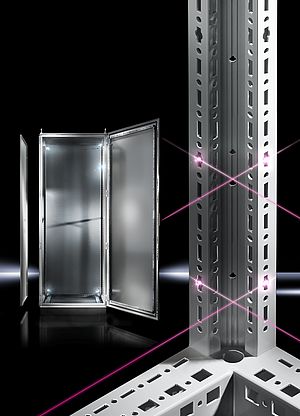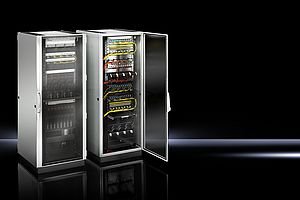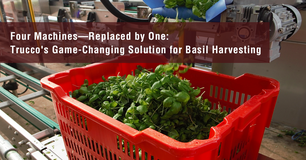Powerful components such as frequency converters give off so much heat in enclosures that the air cooling often reaches its limits. However, if these components are fixed to a water-cooled mounting plate or a cold plate the heat can be specifically removed from the place where it arose. The protection category of the enclosure is retained, and no disturbing vibrations or noises are given off. By further developing its Cold Plate technology, Rittal is offering users improved heat dissipation, as well as flexibility in application and assembly. In the new Cold Plate, the cooling liquid primarily flows horizontally instead of vertically. The main advantage of the horizontal piping is the uniform heat dissipation it provides. And because the cooling water flows in and out at the side, the Cold Plate can be installed at 180°. In other words, the water connections will be on the right or left, as desired, allowing for greater flexibility. Previously, it had only been possible to introduce the inlet and outlet from the rear. Now, with the new version, it is also far easier to empty the cooling channels. And last but not least, the Cold Plate can be mounted from two sides. Made of aluminium, it is available for enclosures that are 600 and 800 mm wide, and is designed for maximum heat losses of 2.5 and 3.0 kW. To achieve ideal contact to the plate, the pipes are pressed into the machined cooling channels without using any additional adhesive. Copper and stainless steel tubing options are available. Copper is used for standard applications with air/water heat exchangers, as well as for recooling systems with water and glycol as media. The stainless steel version is for use in the foodstuffs sector, and where there is a poor quality of water. This allows the user to employ non-treated water as a coolant, such as water from rivers or wells. Accessories include flexible hoses and fluid manifolds, automatic ventilation and system attachments for the active components.


